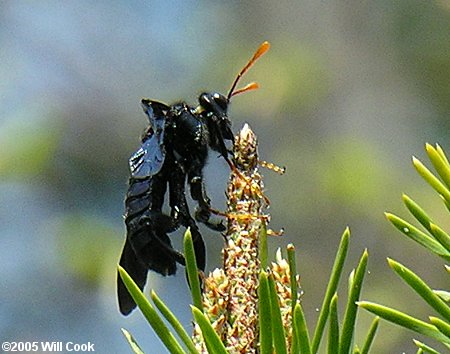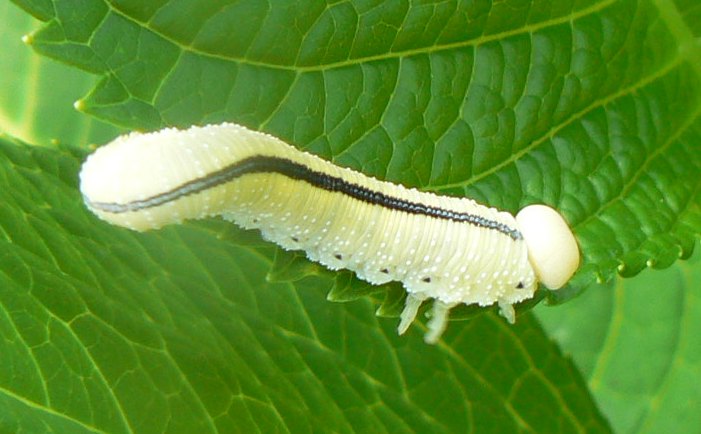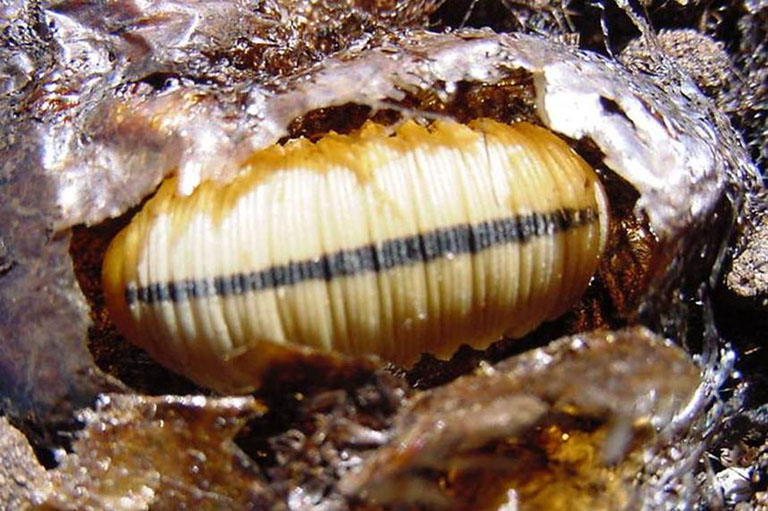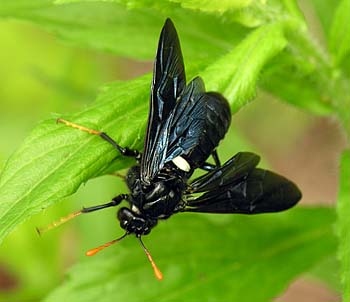
Reproduction
The life cycle of the
Cimbex americana takes
place on a variety of different trees (ranging from maple and
elm to apple and plum) but adult sawflies primarily lay eggs on
willows and elms. In most cases, only one generation hatches per
season, although sometimes larvae in the cocoon stage do not
hatch the first spring, thus making it possible for two
generations to hatch in one season (Borror
et al. 1989).
After mating, the female sawfly slices the underside of
leaves and lays her eggs.
She can lay 50 to 130 eggs at once, depositing as many as
12 eggs on one leaf. In
7-10 days larvae hatch and feed on the leaves and for nutrients
(Barnes 2010).
Larvae finished grazing on the leaves drop
to the base of the tree in search of pupation sights in the dirt
and grass. Once
happily settled, they begin to form cocoons for the winter
months where they become known as prepupae (non-feeding larvae).
The prepupae emerge to become butterflies and moths, a
transformation called pupation, which occurs the following
spring. Adults typically emerge two weeks after pupation (early
May to the middle of June) (Barnes
2010).
The newly matured adult sawfly uses its
mandibles to cut into the limbs of sap-containing trees to
obtain nutrients. By
the end of September and October the sawfly is ready to mate
(U.S. Department of Agriculture 1974).

